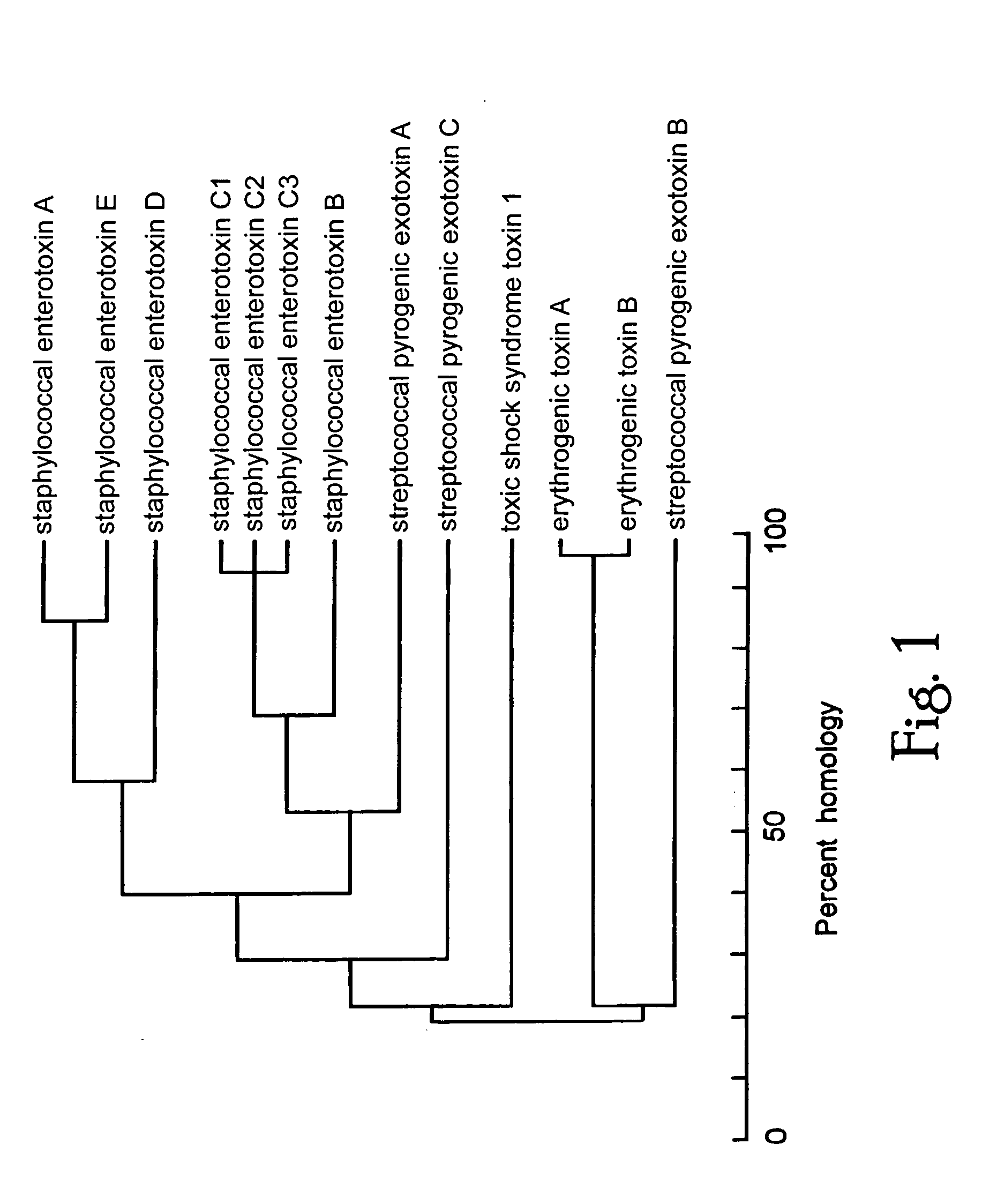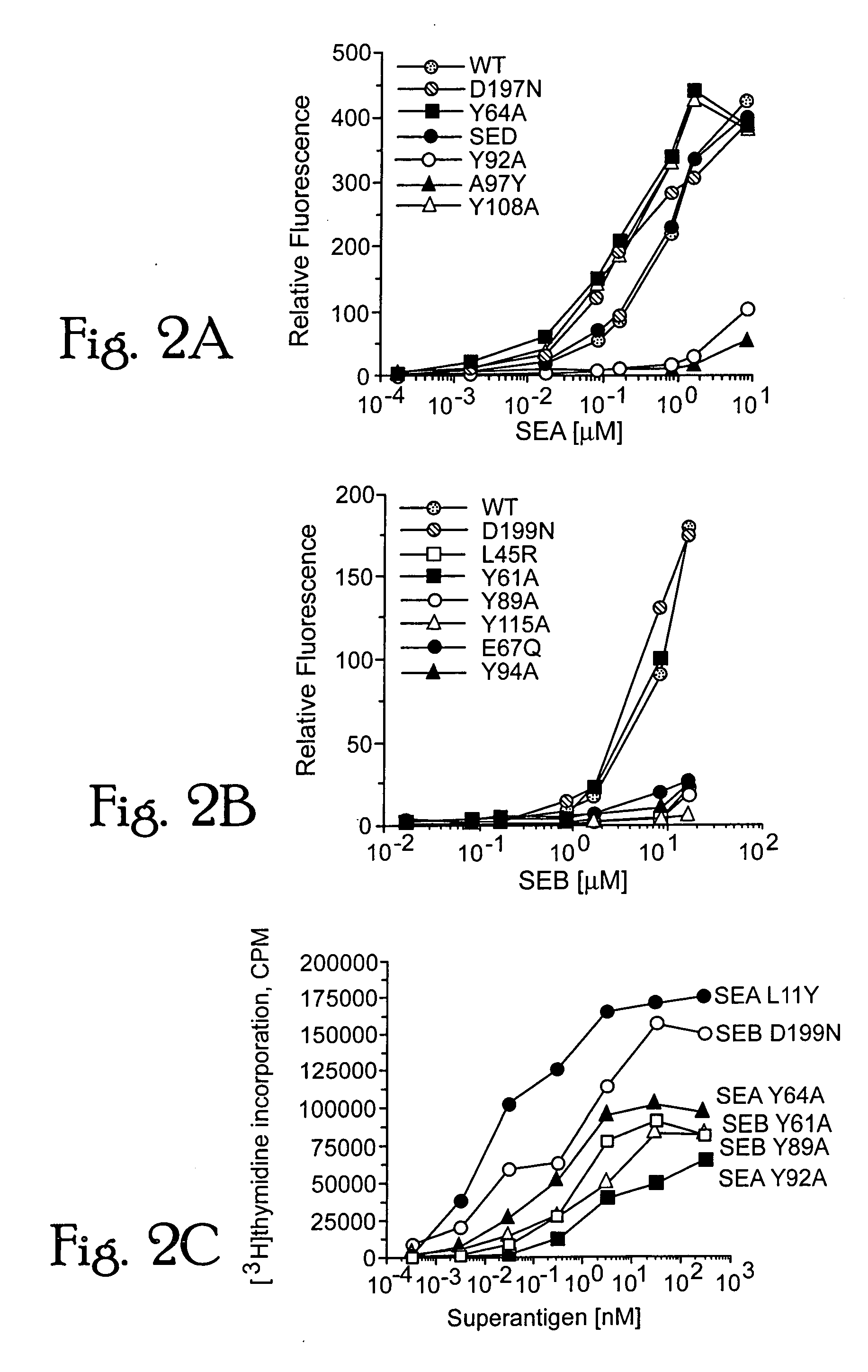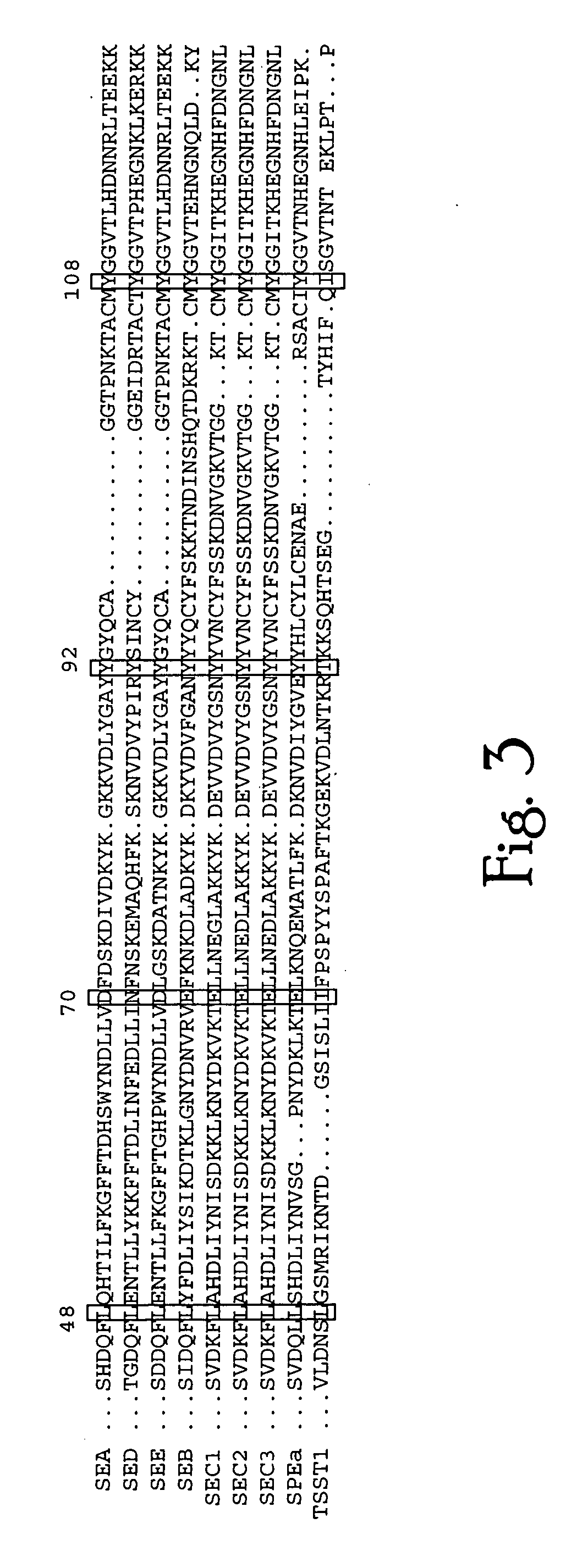Bacterial superantigen vaccines
a technology of superantigens and vaccines, applied in the field of bacteria superantigen vaccines, can solve the problems of difficult characterization of products, low yield of wild-type toxins from bacterial strains used in making toxoids,
- Summary
- Abstract
- Description
- Claims
- Application Information
AI Technical Summary
Benefits of technology
Problems solved by technology
Method used
Image
Examples
example 1
[0101] Molecular modelling and structural studies of staphylococcal and streptococcal superantigens: bacterial superantigens share common 3-dimensional structure.
[0102] Comparison of amino acid sequences (FIG. 1) suggested that bacterial superantigens fall into groups consisting of (1) SEA, SED and SEE, (2) SEB, staphylococcal enterotoxins C1-C3 (SEC1-3), the streptococcal pyrogenic exotoxins A (SPE-A) and C (SPE-C), (3) TSST-1 and (4) the exfoliative toxins (ETA, ETB) and streptococcal pyrogenic exotoxin B (SPE-B), which are the most distant from the others in sequence. Although not available to the inventor when the inventions were first conceived and proof of principle was obtained, the x-ray crystallographic structures of several bacterial superantigens are now known. Diverse superantigens, such as SEB and TSST-1, appear to have little sequence in common, yet they exhibit homologous protein folds composed largely of β strands [Prasad, G. S. et al. (1993) Biochemistry 32, 13761-...
example 2
[0105] Molecular modelling and structural studies of staphylococcal and streptococcal superantigens: A detailed protein structure analysis of SEB and SEA suggested that all bacterial superantigens have a common mechanism for binding MHC class II receptors.
[0106] A least-squares superimposition of the unbound molecules of modeled SEA and the crystal structure of SEB, aligned according to their structurally conserved α-helical and β-strand regions, exhibited a global folding pattern which is very similar. Differences between the two structures are calculated to be located primarily in loops of low sequence homologies, with the largest positional deviations occurring between structurally conserved regions of residues 18-20, 30-32, 173-181, 191-194, and the cysteine-loop region (90-111). Only one of these regions in SEB makes significant contact (residue Y94 in particular) with the HLA-DR1 molecule [Jardetzky, T. S. et al. (1994) Nature 368, 711-718].
[0107] The binding interface betwe...
example 3
[0111] Molecular modelling and structural studies of staphylococcal and streptococcal superantigens: Some interactions of bacterial superantigens with MHC class II receptors are not conserved but are less important than the hydrophobic loop and polar pocket binding sites.
[0112] In determining the overall affinity of the superantigen for DR1, a contributory role is played by structural variations around the common binding motifs. A short, variable structured, disulfide-bonded loop is found in SEA and a homologous longer loop in SEB. The SEB residue Y94, contained within this loop, forms hydrophobic interactions with L60 and A61 of the DRα subunit. Replacement of Y94 with alanine partially inhibits DR1 binding (FIG. 2a,b). An alanine is found in SEA (A97) and SEE at the position equivalent to SEB Y94, and mutating this residue in SEA to tyrosine results in disrupted instead of stabilized interactions with DR1 (FIG. 2a). Although the disulfide loops differ in structure between SEA and...
PUM
| Property | Measurement | Unit |
|---|---|---|
| pH | aaaaa | aaaaa |
| radioactivity | aaaaa | aaaaa |
| pH | aaaaa | aaaaa |
Abstract
Description
Claims
Application Information
 Login to View More
Login to View More - R&D
- Intellectual Property
- Life Sciences
- Materials
- Tech Scout
- Unparalleled Data Quality
- Higher Quality Content
- 60% Fewer Hallucinations
Browse by: Latest US Patents, China's latest patents, Technical Efficacy Thesaurus, Application Domain, Technology Topic, Popular Technical Reports.
© 2025 PatSnap. All rights reserved.Legal|Privacy policy|Modern Slavery Act Transparency Statement|Sitemap|About US| Contact US: help@patsnap.com



